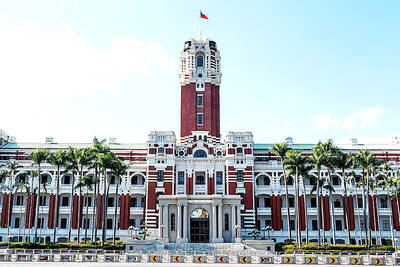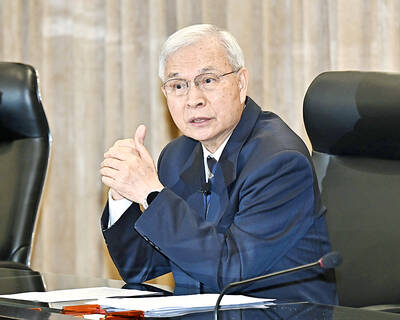Scientists are boldly going where only fiction has gone before -- to develop a "Cloak of Invisibility."
It is not quite ready to hide a Romulan space ship from Captain James T. Kirk of Star Trek or to disguise Harry Potter. But it is a significant start and could show the way to more sophisticated designs.
In this first successful experiment, researchers from the US and Britain were able to cloak a copper cylinder.
It is like a mirage, where heat causes the bending of light rays and cloaks the road ahead behind an image of the sky.
"We have built an artificial mirage that can hide something from would-be observers in any direction," said cloak designer David Schurig, a research associate in Duke University's electrical and computer engineering department.
For their first attempt, the researchers designed a cloak that prevents microwaves from detecting objects. Like light and radar waves, microwaves usually bounce off objects, making them visible to instruments and creating a shadow that can be detected.
The cloaking uses special materials to deflect radar or light or other waves around an object like water flowing around a smooth rock in a stream. It differs from stealth technology, which does not make an aircraft invisible but reduces the cross-section available to radar, making it hard to track.
The new work points the way for an improved version that could hide people and objects from visible light.
Conceptually, the chance of adapting the concept to visible light is good, Schurig said in a telephone interview. But, he added, "From an engineering point of view it is very challenging."
The cloaking of a cylinder from microwaves comes just five months after Schurig and colleagues published their theory that it should be possible. Their work was reported in a paper in yesterday's issue of the journal Science.
"We did this work very quickly ... and that led to a cloak that is not optimal," said co-author David Smith, also of Duke.
"We know how to make a much better one," he added.
The first working cloak was in only two dimensions and did cast a small shadow, Smith said.
The next step is to go for three dimensions and to eliminate any shadow.
Viewers can see things because objects scatter the light that strikes them, reflecting some of it back to the eye.
"The cloak reduces both an object's reflection and its shadow, either of which would enable its detection," Smith said.
The cloak is made of metamaterials, which are mixtures of metal and circuit board materials such as ceramic, Teflon or fiber composite.
In an ideal situation, the cloak and the item it is hiding would be invisible. An observer would see whatever is beyond them, with no evidence that the cloaked item exists.

The CIA has a message for Chinese government officials worried about their place in Chinese President Xi Jinping’s (習近平) government: Come work with us. The agency released two Mandarin-language videos on social media on Thursday inviting disgruntled officials to contact the CIA. The recruitment videos posted on YouTube and X racked up more than 5 million views combined in their first day. The outreach comes as CIA Director John Ratcliffe has vowed to boost the agency’s use of intelligence from human sources and its focus on China, which has recently targeted US officials with its own espionage operations. The videos are “aimed at

STEADFAST FRIEND: The bills encourage increased Taiwan-US engagement and address China’s distortion of UN Resolution 2758 to isolate Taiwan internationally The Presidential Office yesterday thanked the US House of Representatives for unanimously passing two Taiwan-related bills highlighting its solid support for Taiwan’s democracy and global participation, and for deepening bilateral relations. One of the bills, the Taiwan Assurance Implementation Act, requires the US Department of State to periodically review its guidelines for engagement with Taiwan, and report to the US Congress on the guidelines and plans to lift self-imposed limitations on US-Taiwan engagement. The other bill is the Taiwan International Solidarity Act, which clarifies that UN Resolution 2758 does not address the issue of the representation of Taiwan or its people in

US Indo-Pacific Commander Admiral Samuel Paparo on Friday expressed concern over the rate at which China is diversifying its military exercises, the Financial Times (FT) reported on Saturday. “The rates of change on the depth and breadth of their exercises is the one non-linear effect that I’ve seen in the last year that wakes me up at night or keeps me up at night,” Paparo was quoted by FT as saying while attending the annual Sedona Forum at the McCain Institute in Arizona. Paparo also expressed concern over the speed with which China was expanding its military. While the US

SHIFT: Taiwan’s better-than-expected first-quarter GDP and signs of weakness in the US have driven global capital back to emerging markets, the central bank head said The central bank yesterday blamed market speculation for the steep rise in the local currency, and urged exporters and financial institutions to stay calm and stop panic sell-offs to avoid hurting their own profitability. The nation’s top monetary policymaker said that it would step in, if necessary, to maintain order and stability in the foreign exchange market. The remarks came as the NT dollar yesterday closed up NT$0.919 to NT$30.145 against the US dollar in Taipei trading, after rising as high as NT$29.59 in intraday trading. The local currency has surged 5.85 percent against the greenback over the past two sessions, central